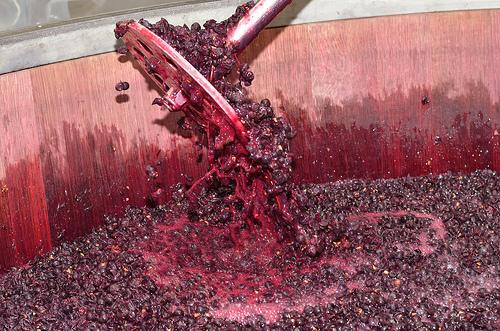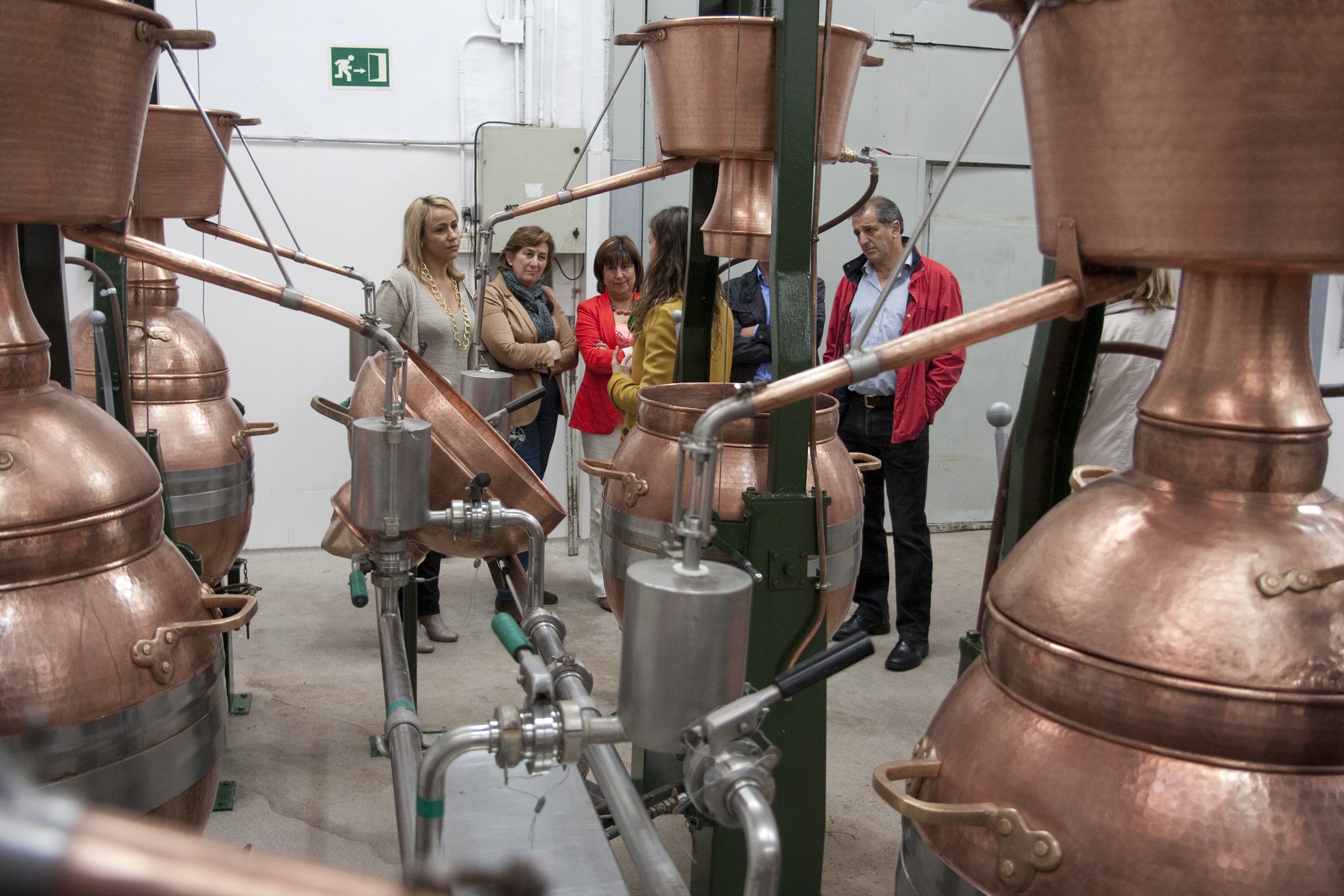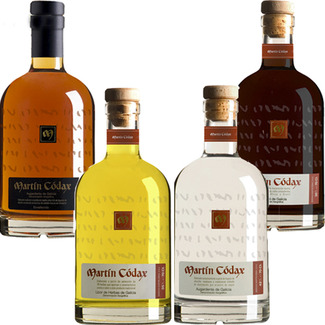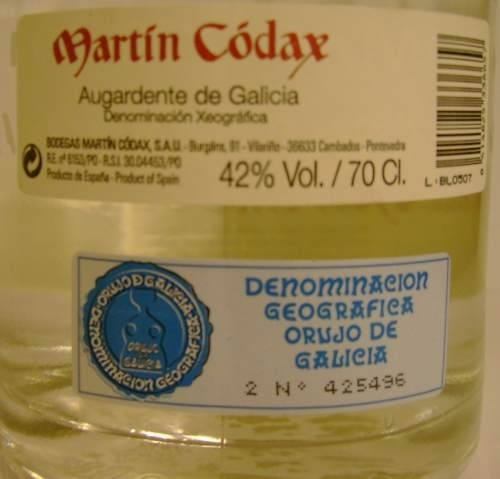Licor de Orujo, or simply Orujo, is a Spanish liquor which is very similar to other European distilled spirits such as marc from France, grappa from Italy and tsiroupo from Greece. All of these drinks are made by distilling grape marc/pomace, which is the solid part of the grape that is left over after the fruit has been pressed - in other words the skins. In Spain it is most common to drink this after a heavy meal as a digestif.
The name of the drink also comes from the ingredients. Those of you who study Spanish might know that the left over parts of the grape after crushing are called 'orujos' in Spanish. The skins, seeds and stalks of the grapes are all put into closed vats and then fermented before being distilled in order to produce the liquor. The stills, which are called alambique or potas, tend to be like large copper kettles which are heated over an open fire. These stills were brought to Spain by the Moors when they conquered Spain.

The distillation process in order to produce alcohol actually originated in Ancient Greece and Alexandria, one of the main focal points of Mediterranean culture during the 2nd and 3rd centuries. Alcohol distillation become much more advanced later on thanks to the Arabs, who applied their knowledge and blending techniques to alcohol distillation. Alcohol is actually an Arabic word. Back in these times, distilled spirits were often believed to have medicinal properties - an opinion that still exists today.

Licor de Orujo however, only appears many centuries later; the first reference to the spirit being in 1663 when a Jesuit monk from Germany, named Atanasio Kircher, documented the existence of hard liquors such as orujo being produced from grape marcs in his chemistry treaty.
 Since this time, the history of orujo has been difficult. As soon as the hard liquors began being produced, the government began imposing heavy taxes on the drink and the production and consumption of such liquors and distilled drinks were actually banned during the 19th century. Concessions and allowances began to be made during the first few years of the 20th century, although there were still a number of obstacles that orujo had to tackle.
Since this time, the history of orujo has been difficult. As soon as the hard liquors began being produced, the government began imposing heavy taxes on the drink and the production and consumption of such liquors and distilled drinks were actually banned during the 19th century. Concessions and allowances began to be made during the first few years of the 20th century, although there were still a number of obstacles that orujo had to tackle.
Orujo at this time was often produced from portable stills, and distillers would travel from town to town to produce the drink. People would give the distiller their grape harvest, which he would then make into orujo. The people would then receive most of the liqour back, although the distiller would take a cut of it to cover his expenses and a bit of profit too!
Now, licor de orujo has to be made to industry and legal standards, although the drink is very commonly made at home. This level of regulated quality has also led to a number of highly revered distilled spirits being produced over the past two decades, and in fact, many licores de orujo have now been awarded Designations of Origin. These DO licores de orujo are produced from high quality grapes and are now replacing some of the home-made versions, which tend to only be found in small towns and villages.
Today, licor de orujo is produced mainly in the northern regions of Spain such as León, Galicia and Asturias, however the liquor is drunk throughout the country. So no matter where you decided to go when you visit Spain, you will still be available to find this drink in a bar or restaurant.
 The best place to try licor de orujo is in Galicia, and more specifically, in the town of Potes. It is here that, every November, the Fiesta del Orujo is celebrated and there are many opportunities to taste the best of the liquor. They also hold a distilling competition where people produce the drink using their own stills and then judges award prizes for the orujo which tastes the best.
The best place to try licor de orujo is in Galicia, and more specifically, in the town of Potes. It is here that, every November, the Fiesta del Orujo is celebrated and there are many opportunities to taste the best of the liquor. They also hold a distilling competition where people produce the drink using their own stills and then judges award prizes for the orujo which tastes the best.
Orujo which has just been distilled is actually a clear liquid but it is often that you will find orujo which is more of an amber colour. This amber version of the Spanish spirit is called 'orujo envejecido' which means 'aged orujo' which is normally fermented and distilled in the same way as normal orujo, but it is then left to age in oak barrels for around two years which then produces the distinctive colour. You may also find Orujo de Hierbas which is yellowy in colour but this orujo has a higher sugar content so it doesn't taste as strong and it has also been macerated with wild herbs giving it a very distinct flavour. Whichever one you try, I am sure you'll love it!
(One of my favourites is Martin Codax as pictured)